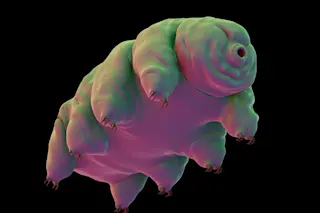An illustration of the water bear. (Credit: Sebastian Kaulitzki/Shutterstock) Hidden among us are survivors – living, breathing beings that have pulled off some pretty remarkable feats in order to live another day. They can be found ambling through the moss beneath our feet, drifting in our oceans and our streams, even stuck in the local pet store or on the subway. You just have to know where to look. These creatures give clues into how we could withstand extreme conditions, regrow damaged tissue or missing limbs, turn back the hands of time, guard ourselves from illness, and perhaps even achieve humankind’s most elusive goal – immortality.
The resilient water bear. (Credit: Sinclair Stammers) Tardigrades are the toughest creatures on the planet. These microscopic animals known as moss piglets or water bears can live for a decade without food or water, endure temperatures near absolute zero or hotter than boiling water, ...














